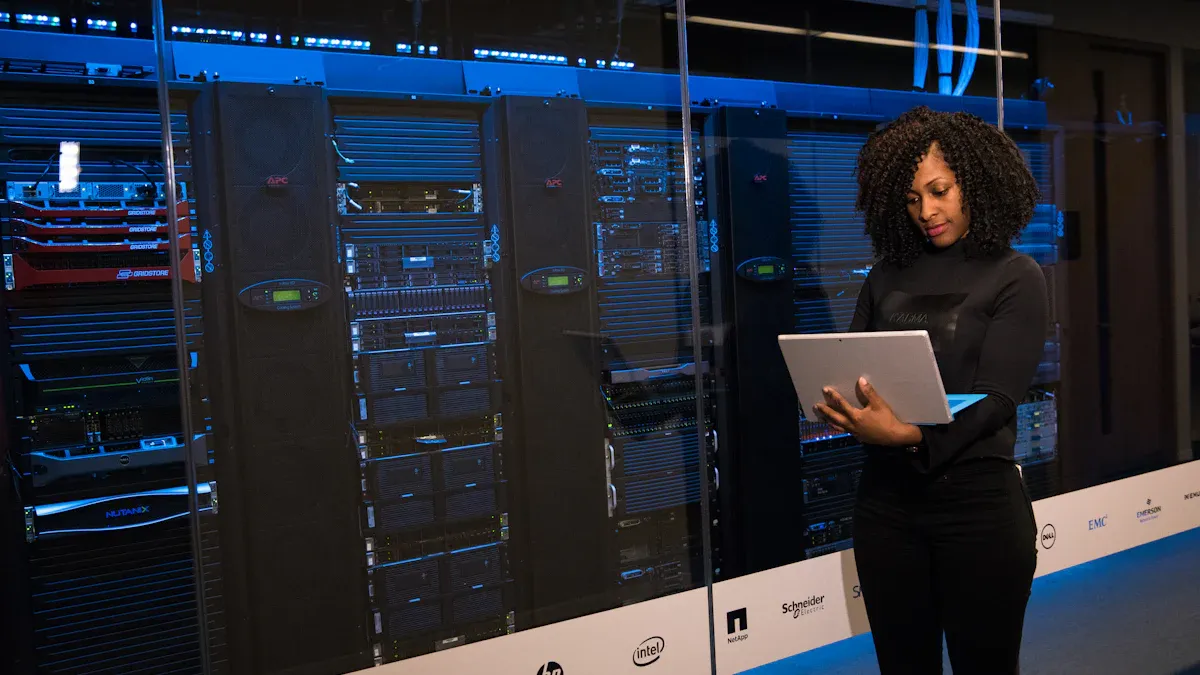
Smart PDUs transform enterprise power distribution with real-time monitoring and intelligent control. Organizations see up to 30% energy savings and a 15% reduction in downtime.
| Metric | Value |
|---|---|
| Energy Savings | Up to 30% |
| Downtime Reduction | 15% |
| Power Efficiency Improvement | 20% |
A modern PDU supports operational visibility and proactive management.
Key Takeaways
- Smart PDUs provide real-time monitoring and remote control, helping enterprises save up to 30% energy and reduce downtime by 15%.
- Effective load balancing and predictive maintenance with smart PDUs improve power efficiency, reliability, and reduce outages.
- Choosing the right smart PDU and integrating it with power management software ensures better capacity planning and ongoing optimization.
Key Benefits of Smart PDU in Enterprise Power Distribution
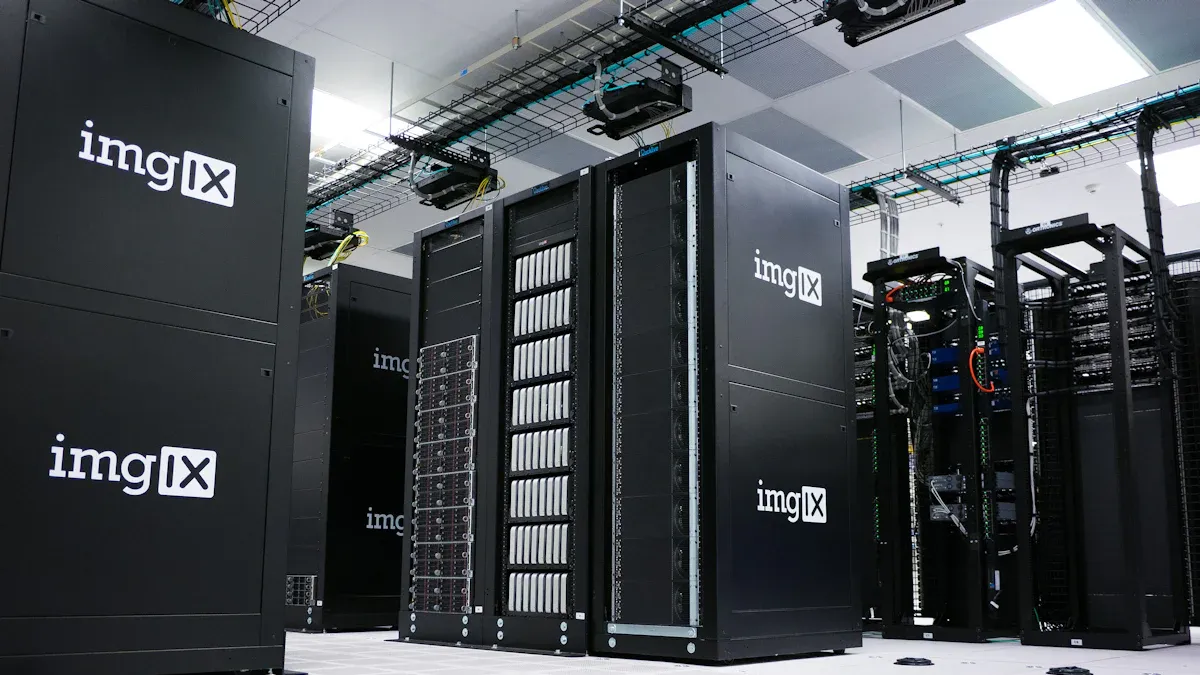
Real-Time Monitoring and Data Insights with PDU
Smart PDUs deliver real-time monitoring that transforms how enterprises manage power distribution. Operators gain immediate access to critical data, such as power usage, temperature, and humidity. This visibility allows teams to identify energy-intensive equipment and optimize usage patterns. Intelligent PDUs support predictive maintenance by providing early warnings for potential issues, which helps reduce downtime and extend equipment lifespan.
| Aspect | Details |
|---|---|
| Energy Efficiency Gains | Intelligent PDUs can reduce operational costs by up to 30% and improve PUE to as low as 1.2. |
| Predictive Maintenance | Real-time data and remote monitoring enable early issue detection, reducing downtime. |
| Power Density Support | Supports high-density racks (15kW to 25kW), optimizing energy use in hyperscale data centers. |
| Sustainability Impact | Helps meet environmental goals by lowering power usage and improving energy management. |
| Market Trend | Growing adoption of cloud-based intelligent PDUs reflects industry shift towards automation. |
Operators use real-time analytics to make dynamic adjustments, improving both performance and energy efficiency. Proactive alerts prevent overloads and help maintain stable operations. The integration of IoT and AI further enhances predictive analytics, enabling automated energy management and smarter decision-making.
Remote Management and Control via PDU
Remote management stands out as a core advantage of smart PDUs. IT teams can monitor and control power distribution from anywhere, reducing the need for on-site interventions. This capability leads to faster response times and improved operational reliability. For example, a leading data center in Asia achieved a 15% reduction in energy consumption by deploying horizontal IP smart PDUs. Telecommunications companies have reported a 20% improvement in equipment uptime through outlet-level monitoring.
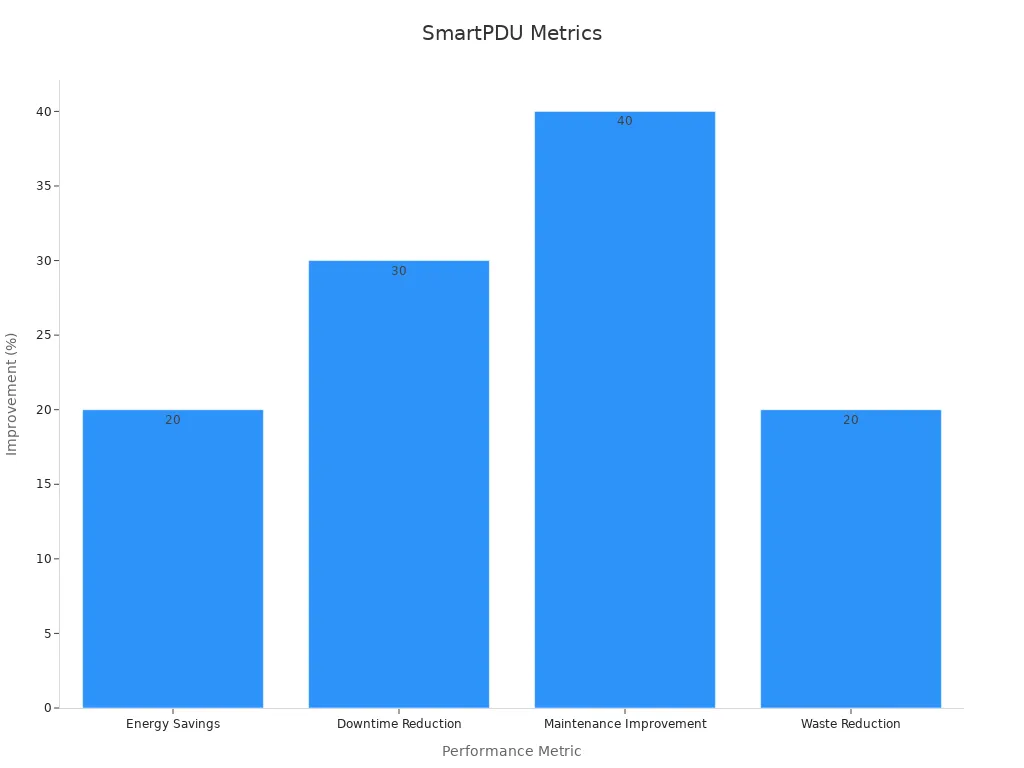
Remote management also enables outlet-level switching, user-defined alerts, and integration with corporate infrastructure. These features support advanced reporting and capacity planning, allowing organizations to make data-driven decisions. Companies like IBM have reported up to 30% energy savings through real-time monitoring, while the U.S. General Services Administration achieved a 41% reduction in energy use, saving $13.5 million annually. These results highlight the significant impact of remote control on energy efficiency and cost savings.
Load Balancing, Energy Efficiency, and Reliability with PDU
Effective load balancing is essential for maintaining energy efficiency and operational reliability. Smart PDUs distribute power evenly across devices, preventing overloads and reducing the risk of outages. Real-time monitoring quickly detects and resolves power issues, while balanced loads enhance efficiency and minimize downtime.
| Metric | Impact on Downtime |
|---|---|
| Real-time monitoring | Quickly detects and resolves power issues |
| Balanced loads | Enhances efficiency and reduces outages |
| Integration with DCIM | Improves resource allocation and redundancy |
Industry data shows that load balancing can reduce downtime risk by up to 20%. Remote management improves maintenance response times by 40%. Intelligent PDUs also support integration with Data Center Infrastructure Management (DCIM) platforms, improving resource allocation and redundancy. By tracking energy consumption in detail, operators can proactively manage power distribution, supporting both sustainability goals and business continuity.
Tip: 80% of power outage-related downtimes are preventable with proper power management, including load balancing. Smart PDUs play a critical role in achieving this level of reliability.
Implementing and Optimizing Smart PDU in Your Enterprise
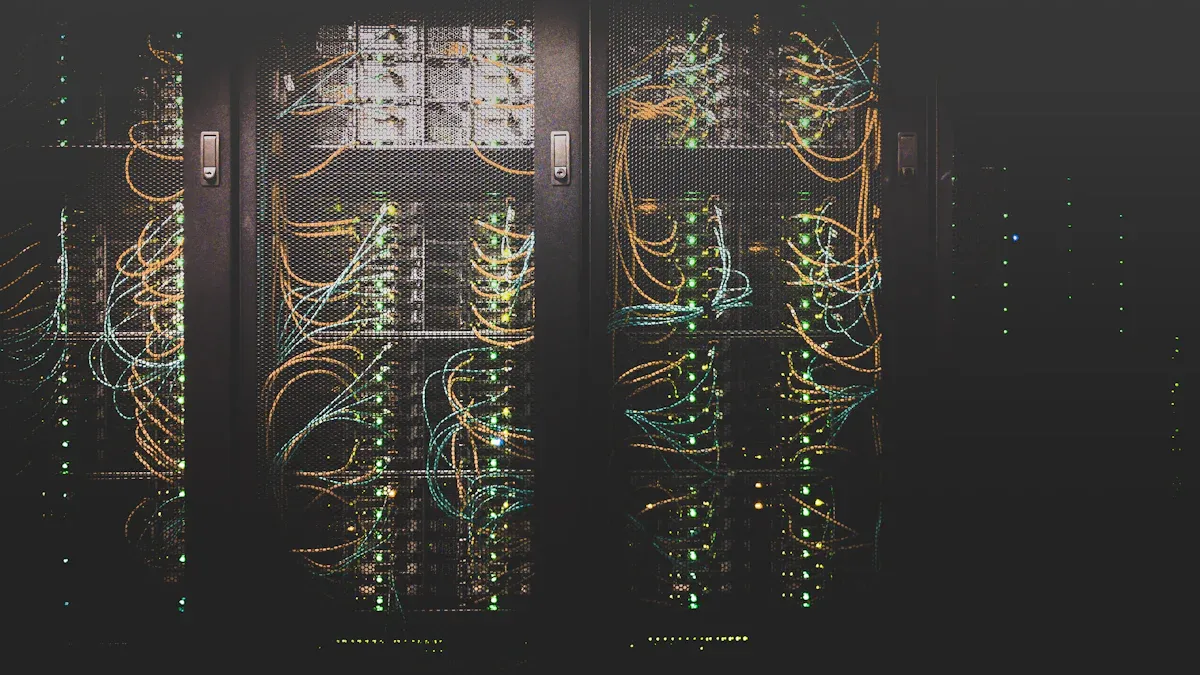
Power Needs Assessment and Capacity Planning for PDU
Accurate power needs assessment forms the foundation of reliable enterprise power distribution. Enterprises analyze historical usage patterns to identify trends and forecast future requirements. They use time series analysis and predictive models to anticipate peak loads and seasonal variations. Workload characterization helps prioritize capacity for critical applications, while resource measurement establishes a baseline for planning.
| Aspect | Description | Examples/Methods |
|---|---|---|
| Historical Data Analysis | Identifies trends and anomalies for forecasting. | Time series analysis, ARIMA models, moving averages. |
| Benchmarking | Evaluates system limits and bottlenecks. | Load testing, stress testing, tools like Apache JMeter. |
| Modeling and Simulation | Predicts system behavior under various scenarios. | Queuing theory, simulation software, capacity planning tools. |
| Workload Characterization | Measures resource consumption for different workload types. | CPU, memory, disk I/O metrics; web transactions, batch jobs. |
| Resource Measurement | Collects data on current usage to establish baselines. | Monitoring CPU, memory, network throughput, storage utilization. |
| Application Architecture | Considers design factors influencing scalability. | Concurrency handling, load balancing, microservices architecture. |
| Infrastructure | Assesses hardware and software components affecting performance. | CPUs, memory, network bandwidth, virtualization, cloud services. |
| Resource Constraints | Accounts for financial, physical, and regulatory limitations. | Budget limits, data center space, compliance requirements, legacy system compatibility. |
Modern enterprises combine empirical data with advanced analytics to create dynamic, responsive capacity plans. They continuously monitor and update these plans to adapt to changing business needs.
Selecting the Right Smart PDU for Your Environment
Choosing the ideal smart PDU requires careful evaluation of operational requirements and infrastructure constraints. Enterprises consider several factors to ensure compatibility and scalability:
- Type of PDU: Options include basic, metered, monitored, switched, and intelligent models, each offering different levels of control and monitoring.
- Number and Type of Outlets: The quantity and compatibility of outlets, such as IEC C13, must match current and future equipment needs.
- Outlet Color-Coding: Color-coded outlets simplify load balancing and circuit identification, reducing the risk of overloads.
- Footprint and Heat Dissipation: Vertical (0U) PDUs save rack space but require attention to airflow and heat management.
- Operating Temperature: High-temperature-rated PDUs perform reliably in hot exhaust environments.
- Metering Capabilities: Input and outlet-level metering support precise monitoring and capacity planning.
- Remote Monitoring and Control: Network-connected PDUs enable remote alerts, power cycling, and outlet management.
- Universal Compatibility: Seven-pin connectors and interchangeable input cables support global deployment.
Tip: Intelligent PDUs with integrated sensors and remote management features provide the flexibility and insight needed for modern data centers.
Integrating PDU with Power Management Software
Integration with centralized power management software elevates operational efficiency. Enterprises deploy platforms such as PowerPanel Enterprise to achieve real-time monitoring, dynamic dashboards, and instant alarms. These systems aggregate data from multiple PDUs, enabling unified control and advanced analytics.
- Real-time remote monitoring at the outlet level supports centralized management.
- Environmental sensors track temperature and humidity, maintaining optimal conditions.
- Centralized dashboards provide instant visibility into power usage, load balancing, and system health.
- Automated alerts and periodic reporting help teams respond quickly to anomalies.
Business intelligence tools like Tableau, Microsoft Power BI, and IBM Cognos Analytics further enhance data visualization and predictive insights. These integrations support continuous improvement and informed decision-making.
Best Practices for PDU Deployment and Ongoing Optimization
Enterprises follow industry best practices to maximize the value of smart PDUs:
- Use real-time monitoring at the individual outlet level for precise management.
- Ensure measurement accuracy within ±1% for reliable power usage effectiveness (PUE) calculations.
- Incorporate environmental sensors to monitor temperature and humidity.
- Employ overload protection to prevent equipment damage.
- Utilize centralized management software for operational reliability and energy efficiency.
- Select ultra-low power consumption PDUs to minimize overhead energy costs.
- Upgrade firmware via USB to maintain optimal system performance.
- Choose PDU models that align with enterprise needs, from basic to switched metered-by-outlet types.
Note: Regularly updating capacity plans and collaborating across teams ensures ongoing optimization and responsiveness to evolving demands.
Addressing Common PDU Challenges and Solutions
Enterprises may encounter challenges when deploying and managing smart PDUs. Common issues include integration with existing DCIM systems, managing cybersecurity risks, and balancing cost with feature requirements. Solutions involve:
- Selecting PDUs with open protocols and robust security features to simplify integration and protect data.
- Training staff on new management platforms and best practices.
- Using benchmarking and simulation tools to validate performance and identify improvement areas.
- Regularly reviewing and updating firmware to address vulnerabilities and enhance functionality.
By proactively addressing these challenges, organizations maintain reliable, efficient, and scalable power distribution systems.
Smart PDUs deliver measurable gains in enterprise power distribution. Organizations report up to 20% energy savings, 25% reliability improvement, and 40% faster maintenance response. The table below highlights these outcomes:
| Benefit | Measurable Impact |
|---|---|
| Energy Savings | Up to 20% reduction |
| Reliability | 25% increase |
| Maintenance Speed | 40% faster response |
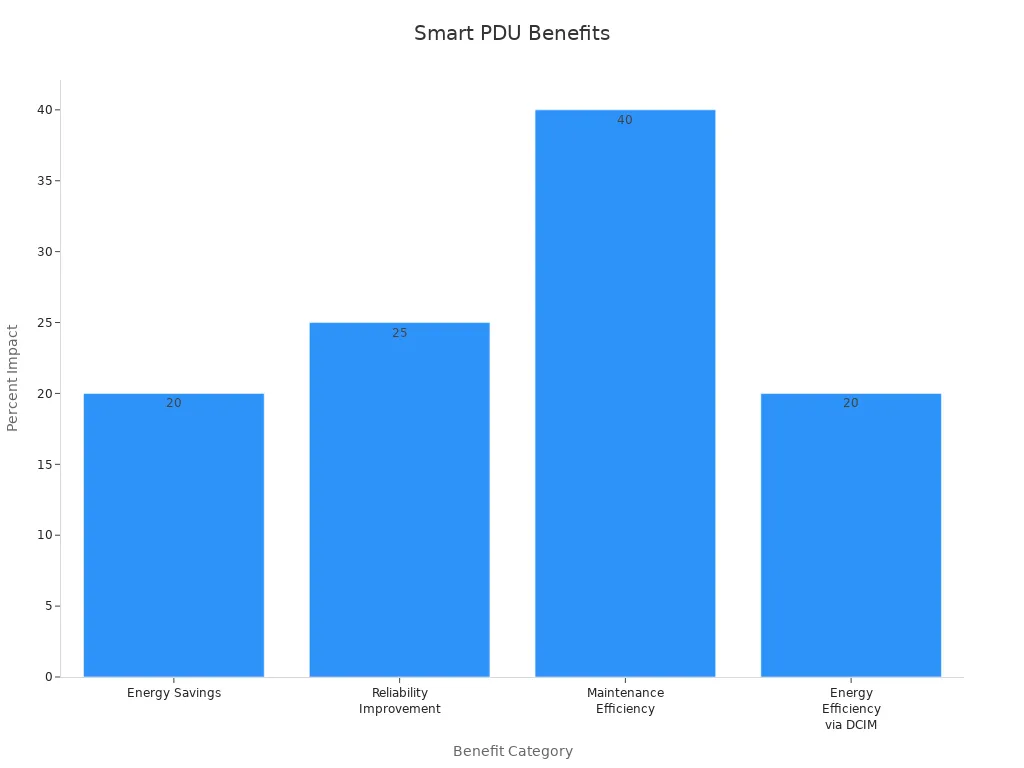
FAQ
What is the difference between a basic PDU and a smart PDU?
A basic PDU distributes power only. A smart PDU provides monitoring, remote management, and advanced control features for enterprise environments.
How does a smart PDU improve data center reliability?
Smart PDUs detect power issues in real time. They send alerts and allow remote intervention, which helps prevent downtime and equipment damage.
Can smart PDUs help reduce energy costs?
Yes. Smart PDUs track energy usage, identify inefficiencies, and support load balancing. These features enable organizations to optimize power consumption and lower operational expenses.
Post time: Jul-01-2025





